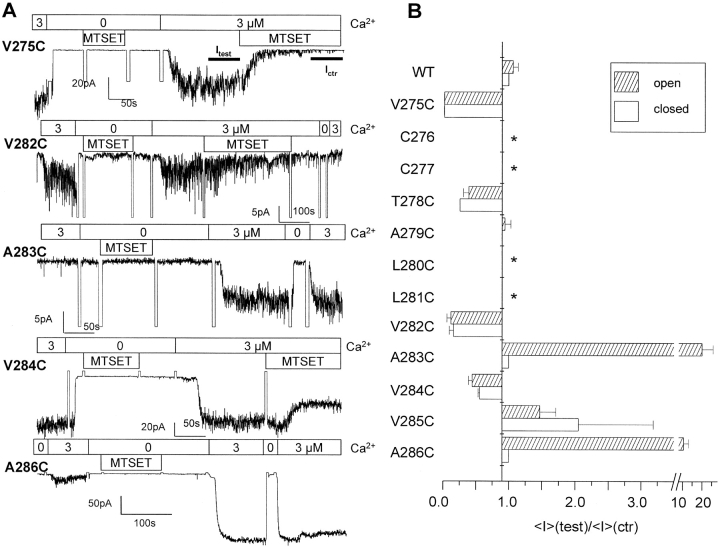Figure 9.
State-dependent action of MTSET. (A) Inside-out recordings showing the state dependency of the MTSET action on IKCa mutants. The accessibility to MTSET of the substituting cysteine was estimated in MTSET protection experiments as discussed in materials and methods. The applied potential was maintained at −60 mV throughout. (B) Bar graph representation of the ratio [<I>(test)/<I>(ctr)] measured with (closed) or without (open) MTSET preconditioning in zero internal Ca2+ conditions. The <I>(test)/<I>(ctr) ratios obtained for the second MTSET application in the perfusion protocol illustrated in A were estimated at 0.02 ± .006 (n = 3) for V275C, 0.26 ± 0.02 (n = 2) for T278C, 0.16 ± 0.06 (n = 3) for V282C, 0.54 ± 0.05 (n = 2) for V284, and 2 ± 1 (n = 3) for V285C, respectively. These values are not significantly different from the <I>(test)/<I>(ctr) ratios measured without an initial MTSET exposure in zero internal Ca2+. In contrast the <I>(test)/<I>(ctr) values estimated for A283C and A286C mutants decreased drastically from 19 ± 5 (n = 5) and 10 ± 0.54 in the absence of MTSET preconditioning in zero external Ca2+, to 1.0 ± 0.05 (n = 5) and 1.0 ±0.02 (n = 3) for the perfusion protocol illustrated in A. These observations support a model whereby A283 and A286 remained accessible to MTSET in conditions where channels were maintained in the closed state.

